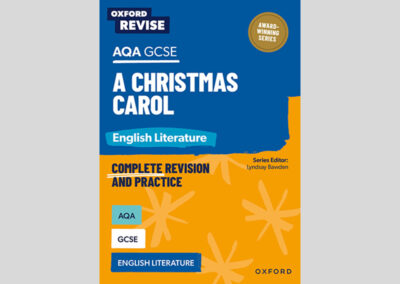AQA GCSE English Literature: A Christmas Carol Glossary
The key vocabulary you need to learn for your AQA GCSE English Literature: A Christmas Carol paper. Find all the terms and definitions you need to understand, from ‘AVARICE’ to ‘UNIVERSALLY’.
A - D (AVARICE to DIRECT ADDRESS)
avarice
Avarice is extreme greed for possessions or money.
benighted
To be benighted is to be overcome by darkness.
contrast
Contrast in a text is when two things are presented in such a way as to highlight their differences.
debtors’ prison
Until the middle of the nineteenth century, people who owed money (had debt) and could not pay it were placed into debtors’ prisons.
direct address
Direct address is a technique in which a writer addresses the reader using ‘you’ or ‘your’.
F - H (FIGURATIVE LANGUAGE to HUMILITY)
figurative language
Figurative language is the use of words to convey meaning in a non-literal way, for example metaphors and similes.
function
Function is the purpose of something.
genre
The genre of a text is its broad category, such as horror story, romance, or travelogue.
heresy
Heresy is an opinion which is considered as going against the generally accepted opinion.
humility
Humility is a feeling of having no special importance.
I - O (IRONY to OMNISCIENT)
irony
Irony occurs when there is a contrast between what is expected and what happens, or when words mean the opposite of what they say.
metaphor
A metaphor brings something to life imaginatively by speaking of something as if it is something else that it resembles in some way, without using ‘like’ or ‘as’.
metaphorically
Something acting metaphorically is acting in a way that brings something to life imaginatively as if it is something else that it resembles in some way.
narrative voice
The narrative voice is the perspective from which a story is told.
omniscient
Omniscient means ‘all-knowing’. In fiction, an omniscient author assumes they know, and can therefore reveal, everything about all their characters, including their thoughts and feelings.
P - R (PARABLE to REDEMPTION)
parable
A parable is a simple story used to illustrate a moral or spiritual lesson in life.
personification
Personification is a technique in which a writer describes non-human things as if they were human, as in ‘Time marches on’.
personify
To personify something is to describe it as if it were human.
precept
A precept is a generally accepted rule for a person’s actions of behaviour.
reclamation
Reclamation is the process of claiming something back.
redemption
Redemption is being saved from sin, error, or evil.
S (SECOND PERSON to SYMBOLISM)
second person
A second-person viewpoint (or ‘perspective’) is when a writer addresses the reader using ‘you’ and ‘your’.
simile
Similes are figures of speech that describe things more vividly by comparing them to other things using ‘like’ or ‘as’.
Standard English
Standard English is the variety of English used in formal contexts, not using dialect, colloquialisms, or slang.
stilted
When someone is stilted they are behaving in a stiff, unnatural, and self-conscious way.
structure
The structure of a text is how its parts relate to each other to make a whole.
symbolism
Symbolism is the use of symbols: things in a text that represent an abstract idea or feeling, such as a rainbow to represent hope.
T - U (TONE to UNIVERSALLY)
tone
Tone can refer to an author’s attitude to their subject, and to the relationship they seek to establish with their readers.
universally
Universally means in every case, all the time.
